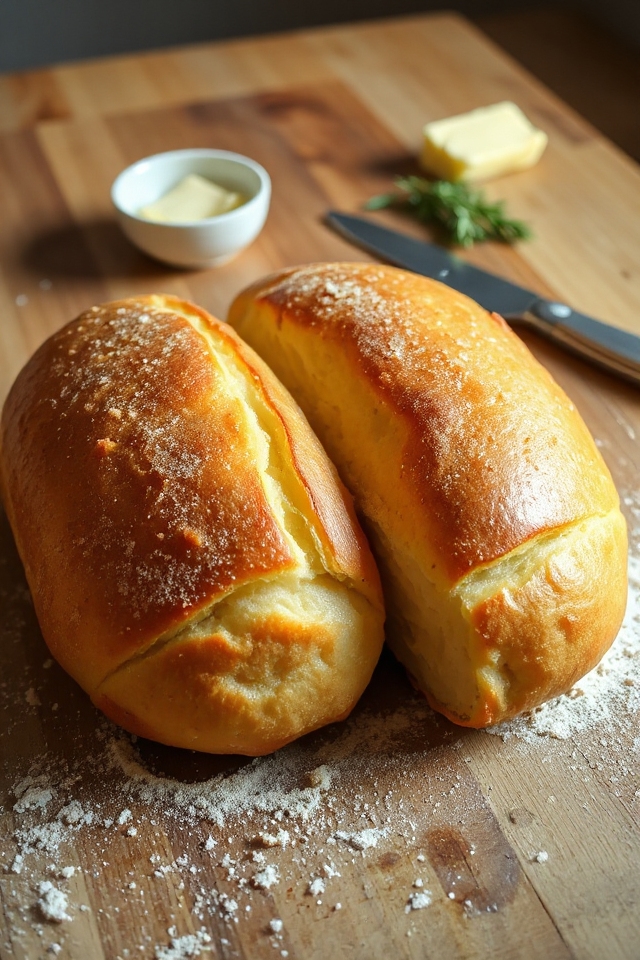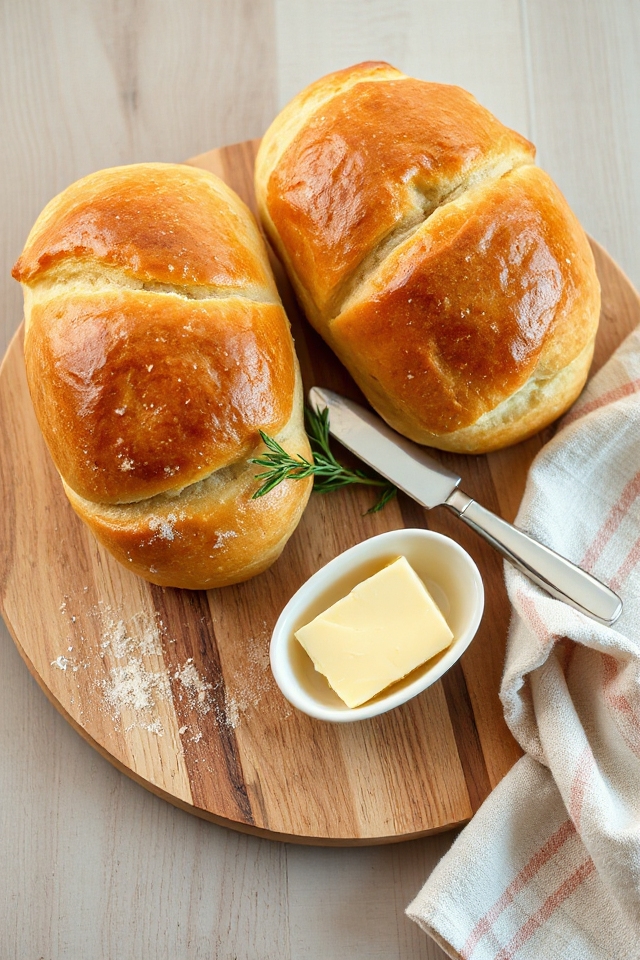Why You’ll Love This Potato Bread Recipe
If you’re looking for a bread recipe that’s both comforting and unique, you’ll love this potato bread. It’s soft, moist, and has a subtle flavor that sets it apart from your typical loaf.
I adore how the potatoes add a delightful texture, making it perfect for sandwiches or simply slathered with butter. The aroma that fills my kitchen while it bakes is simply irresistible.
Plus, it’s a great way to use up leftover potatoes! Once you try this recipe, you’ll find yourself reaching for it time and again, impressing friends and family with something truly special.
Ingredients of Potato Bread
When it comes to making potato bread, the ingredients are what set the stage for that soft, tender loaf you’re dreaming of. It’s a delightful blend of simple pantry staples, with the star of the show being, of course, the potatoes. They not only add moisture but also contribute to the unique flavor and texture that make this bread so special.
If you’ve got some leftover potatoes hanging around, this is the perfect way to put them to good use. So, let’s gather up what we need to make this delicious bread!
Ingredients for Potato Bread:
- 3 peeled potatoes, cooked until tender
- Approximately 2 cups of potato water (the liquid from cooking the potatoes)
- 1 (1/4 ounce) package of yeast
- 2 tablespoons of shortening
- 2 tablespoons of sugar
- 1 tablespoon of salt
- 6 to 6 1/2 cups of flour
Now, before you dash off to the kitchen, let’s chat a bit about these ingredients. The potatoes are the real MVP here; they give the bread that moist, soft texture we all crave. You can use any kind of potato, though I find that russets work beautifully.
And don’t worry too much about measuring that potato water exactly—it’s more about getting the right consistency in the dough. As for the flour, start with 6 cups and then add more as needed. You want the dough to be smooth and elastic, kind of like that moment when you realize you’ve finally mastered the art of kneading (which, trust me, can take a bit of practice).
How to Make Potato Bread

Alright, let’s plunge into how to make that dreamy potato bread. First things first, you’ll want to start with those 3 peeled potatoes, which you’re going to cook until they’re tender. Once they’re nice and soft, drain them, but don’t toss that cooking water just yet. You’ll need to mash the potatoes right in their liquid to make about 2 cups of what we call potato water. I mean, who knew potatoes could be so versatile? This is where the magic begins.
Let that potato water cool down until it’s lukewarm—too hot, and you’ll kill the yeast, and we definitely don’t want that.
Now, grab your 1/4 ounce package of yeast and sprinkle it into 1/4 cup of the lukewarm potato water. Let it sit for a few minutes, so the yeast can get all bubbly and excited. Meanwhile, in the remaining potato water, mix in 2 tablespoons of shortening, 2 tablespoons of sugar, and 1 tablespoon of salt. This is where you’re building flavor and texture, so don’t skimp on the stirring.
Once that’s nicely combined, add the softened yeast mixture along with 1/2 cup of flour. At this point, you’re basically a bread wizard concocting a potion. Beat that mixture until it’s smooth, then gradually add in the remaining flour, about 6 to 6 1/2 cups total. You want the dough to come together and feel like it’s just begging for some kneading—smooth, elastic, and not at all sticky.
Speaking of kneading, turn that dough out onto a floured surface and get your hands in there. Knead it until it’s as elastic as a rubber band—think about 8 to 10 minutes. If it feels too sticky, sprinkle in a bit more flour.
Now, put that dough into a greased bowl, cover it up, and let it rise until it’s doubled in size. This is the part where you can take a deep breath and maybe even enjoy a snack while you wait.
When it’s finally doubled, punch it down (not literally, but you get the idea), divide it into two parts, shape them into loaves, and place them in greased loaf pans. Cover them again and let them rise until they’re puffed up like little clouds.
Preheat your oven to 375°F, then bake those beauties for about 45 minutes. You’ll know they’re done when they start to pull away from the sides of the pan and have that lovely golden color.
And just like that, you have your own homemade potato bread, ready to be slathered with butter or made into a sandwich. How satisfying is that?
Potato Bread Substitutions & Variations
While I love the classic potato bread recipe, there are plenty of substitutions and variations you can try to make it your own.
For a gluten-free option, swap in a gluten-free flour blend. You can also experiment with different types of potatoes—sweet potatoes add a lovely flavor and color.
If you want to enhance the taste, consider adding herbs like rosemary or garlic. For a richer texture, substitute butter for shortening.
And if you’re feeling adventurous, try incorporating cheese or cooked bacon into the dough for a savory twist. Each variation can create a unique and delicious loaf!
Additional Tips & Notes
To guarantee your potato bread turns out perfect every time, I recommend paying attention to a few key details.
First, make sure your potato water is lukewarm; too hot can kill the yeast. Knead the dough until it feels elastic and smooth, like your earlobe. This step is essential for a good rise.
When letting the dough rise, find a warm spot—your oven with the light on works well.
Finally, don’t skip the second rise; it enhances the bread’s texture. Trust me, a little patience goes a long way for that soft, fluffy loaf you’ll love!
